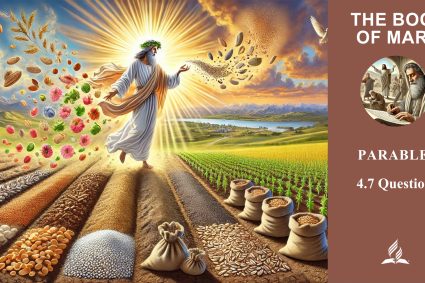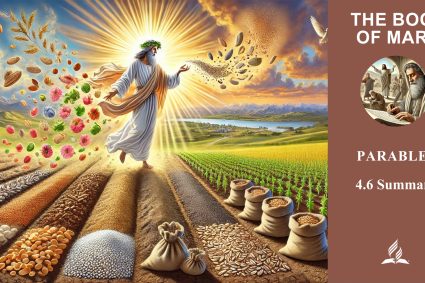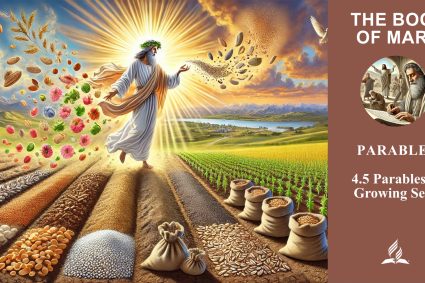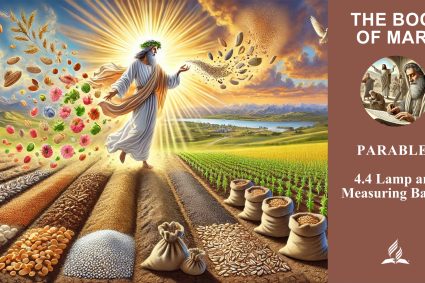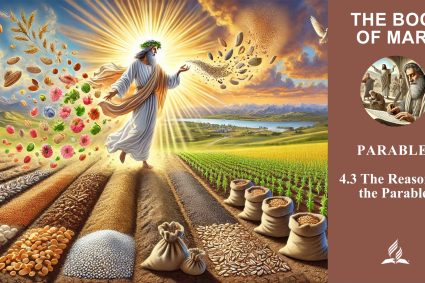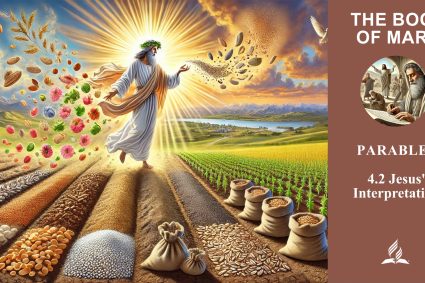


6.6 Summary
The Victory of Truth: The Prophecy and Fulfillment of the Two Witnesses
Lesson 6 mainly focuses on Revelation 11 and the symbolic significance of the two witnesses mentioned in this chapter. These witnesses represent the Old and New Testaments of the Bible, embodying divine truth and authority.
The lesson describes how the two witnesses are initially attacked and defeated, symbolizing the suppression of truth by evil, as occurred during the French Revolution. Despite this apparent defeat, the witnesses are ultimately resurrected, representing the triumph of truth and the restoration of their authority.
The lesson also emphasizes the importance of the Bible as the unchanging and eternal word of God, which preserves its power and truth even in times of darkness and unbelief. It encourages believers to rely on God’s promises and firmly believe in His sovereign plan, which ultimately culminates in His triumphant victory and the revelation of His glory.
Furthermore, the contrast between the godlessness of the French Revolution and the glorious climax in Revelation 11 is highlighted, serving as encouragement in faith, warning against godlessness, hope for restoration, and a challenge to action.
Overall, Lesson 6 teaches that truth will ultimately triumph and that believers can confidently trust in God despite the difficulties of life.

The connection between Lesson 6 and our everyday lives and faith is multifaceted and profound. Here are some key points that illustrate this connection:
-
Faithfulness in Times of Trial: The prophecies about the two witnesses in Revelation 11 remind us that our faith is often tested. Like the witnesses, we too must remain steadfast in difficult times and hold fast to God’s truth even when faced with challenges and persecution.
-
The Power of Prayer: In Revelation 11:18, we see the elders in heaven worshiping and thanking God. This reminds us that prayer plays an important role in our faith life. Amidst trials and difficulties, we can rely on God and find strength and comfort through prayer and worship.
-
Hope for Eternal Life: The visions of Christ’s reign at the end of time in Revelation 11 give us hope for an eternal future in God’s kingdom. This hope for eternal life encourages us to see our present problems and sufferings in a larger, eternal context and to look forward to God’s restoration of all things in the end.
-
The Importance of the Bible: The prophecies and symbols in Revelation 11 underscore the importance of the Bible as the unchanging and eternal word of God. By relying on the Scriptures and applying their teachings in our daily lives, we can find wisdom, guidance, and comfort to face life’s challenges.
Overall, the connection between Lesson 6 and our everyday lives and faith shows that the teachings and truths of Revelation are not merely abstract concepts but have practical applications for our daily lives. By understanding and integrating them into our faith life, we can be strengthened, encouraged, and guided as we strive toward our eternal hope in Christ.

The victory of truth stands as an enduring testimony to the mighty fulfillment of divine prophecy and the unstoppable spread of the divine Word despite dark times of persecution and martyrdom.

1.How do the principles of the Great Controversy manifest in the French Revolution?
The principles of the Great Controversy, as depicted in the Bible and in the book “The Great Controversy,” are reflected in various aspects of the French Revolution:
-
The struggle between good and evil: The French Revolution was characterized by a profound conflict between established authorities and revolutionary forces. On one side were the oppression by the monarchy, the nobility, and the church, which were seen as corrupt and unjust. On the other side were the ideals of liberty, equality, and fraternity propagated by the revolutionaries. This conflict mirrored the larger spiritual battle between good and evil as described in the Great Controversy.
-
Rejection of divine authority: During the French Revolution, the authority of the church and faith was heavily questioned. Church institutions were attacked, religious symbols destroyed, and religious leaders persecuted. This reflected the rejection of divine authority as described in the Great Controversy, where Satan attempts to turn people away from God and tempt them to reject His authority.
-
Effects of rebellion and sin: The violence and chaos that prevailed during the French Revolution demonstrated the devastating effects of rebellion and sin. Thousands of people were killed, and society was characterized by instability and uncertainty. This illustrates the consequences of sin and disobedience to God as described in the Great Controversy.
-
Quest for liberation and redemption: Despite the violence and chaos, people during the revolution sought liberation from oppression and injustice. This quest for liberation reflects humanity’s fundamental need for redemption as described in the Great Controversy, where God offers a way for salvation and redemption for humanity.
Overall, the events of the French Revolution draw parallels to the principles of the Great Controversy by reflecting the spiritual struggle between good and evil, the rejection of divine authority, the effects of rebellion and sin, and the quest for liberation and redemption.
2.As someone argued that there is no God, he wrote that “we are free to set our own goals and venture beyond all intellectual limits without looking at prohibition signs.” Why is this formulation “without looking at prohibition signs” so revealing of the motives of many who reject God? How could such ideas help explain some of what happened during the French Revolution?
The formulation “without looking at prohibition signs” is revealing of the motives of many who reject God because it expresses the human desire for autonomy and self-determination. By emphasizing that one is “free to set their own goals” and “venture beyond all intellectual limits,” it expresses the desire to detach oneself from any external authority or restriction and focus solely on one’s own ideas and desires. This mindset is typical of those who reject God as they reject the notion of a higher authority and instead emphasize their own autonomy.
Similar ideas played a crucial role during the French Revolution. The revolutionaries sought a society where they rejected the norms and values imposed by the monarchy and the church. They aimed to liberate themselves from any external control and realize their own ideas of freedom and equality. This led to a rebellion against traditional authorities and a upheaval of the existing social order.
The idea of “without looking at prohibition signs” was a central part of the ideology of many revolutionaries who believed that they could shake off the chains of oppression and build a new, better society without the constraints of religion and monarchy. However, this also led to a radical upheaval characterized by violence, chaos, and destruction as the revolutionary forces rejected any authority and order they viewed as obstacles to their goals.
Overall, the emphasis on autonomy and the rejection of external constraints, as expressed in the quoted formulation, reveals the motives of many who reject God and can also help explain the motivations behind some of the radical ideas that prevailed during the French Revolution.

3.What significance does John’s vision of the sanctuary have regarding end-time events? John’s vision of the sanctuary regarding end-time events carries great symbolic significance and provides important insights into understanding end-time prophecies.
The mention of the sanctuary and the Ark of the Covenant in Revelation suggests that John had a vision of the presence of God in heaven. The sanctuary and the Ark represent holiness and the divine presence. Their opening could indicate a special revelation or work of God occurring during end-time events.
For Christians, the Ark of the Covenant often symbolizes the law of God kept in the heart of the heavenly sanctuary. The vision of the Ark in heaven emphasizes the continuity and fulfillment of Old Testament promises and symbols in the New Testament. It reminds that God’s word and actions in history are unified, and that the fulfillment of His plan of salvation ultimately culminates in the revelation of His glory in heaven.
Regarding end-time events, John’s vision of the sanctuary could suggest that God will provide a special revelation of His presence and His will in the last days. The mention of the Ark and the opened temple could indicate that God will lead His people and reveal His ways to them in the end times.
Furthermore, the vision of the sanctuary in the end times could also suggest that God will protect and strengthen His people amidst trials and tribulations. The Ark in the sanctuary was a place of God’s presence and protection for His people in the Old Testament, and so its mention in the end times could indicate that God will also care for His people in the last days.
Overall, John’s vision of the sanctuary helps deepen the understanding of end-time events by pointing to God’s presence, protection, and guidance for His people.
Visited 25 times, 1 visit(s) today

